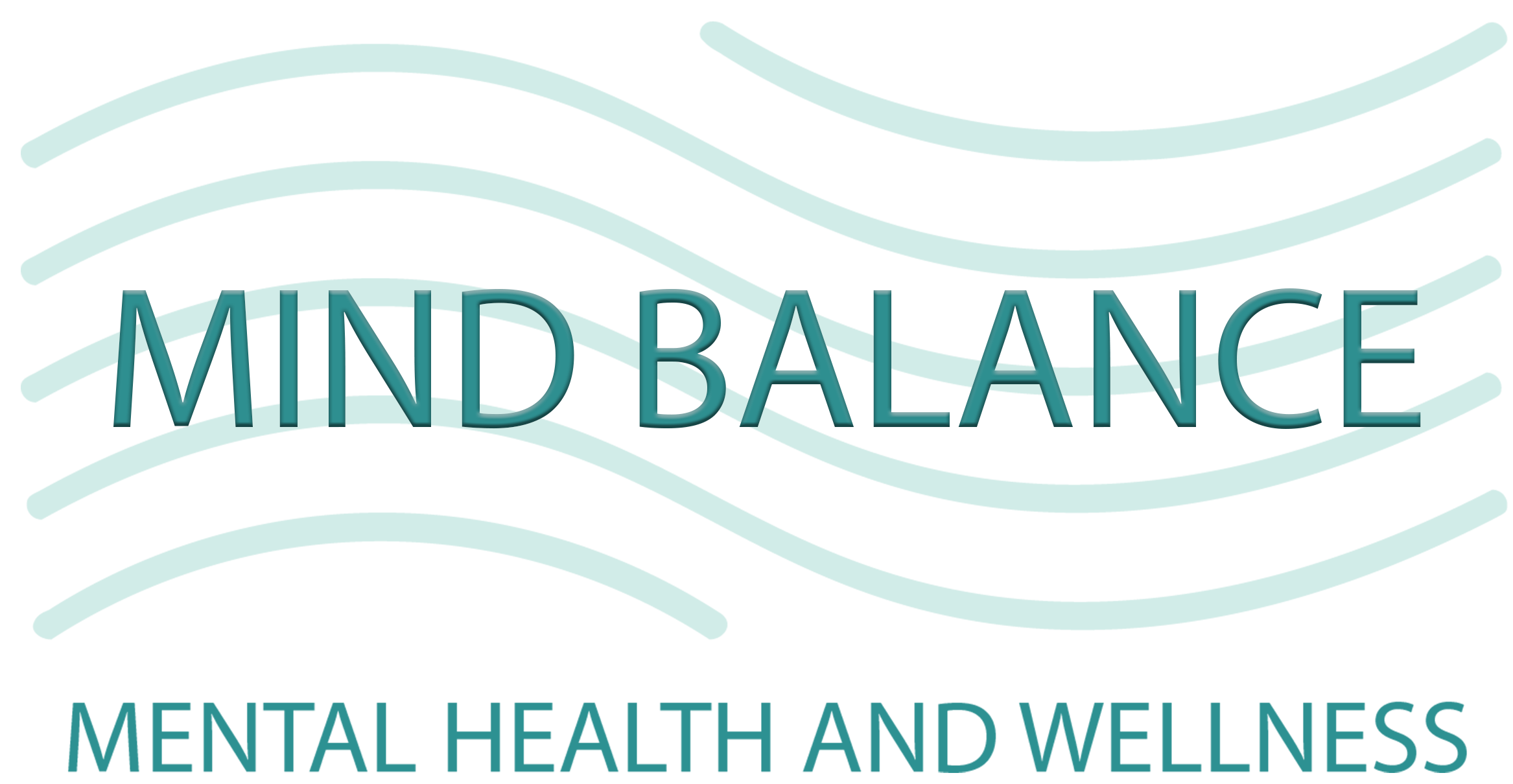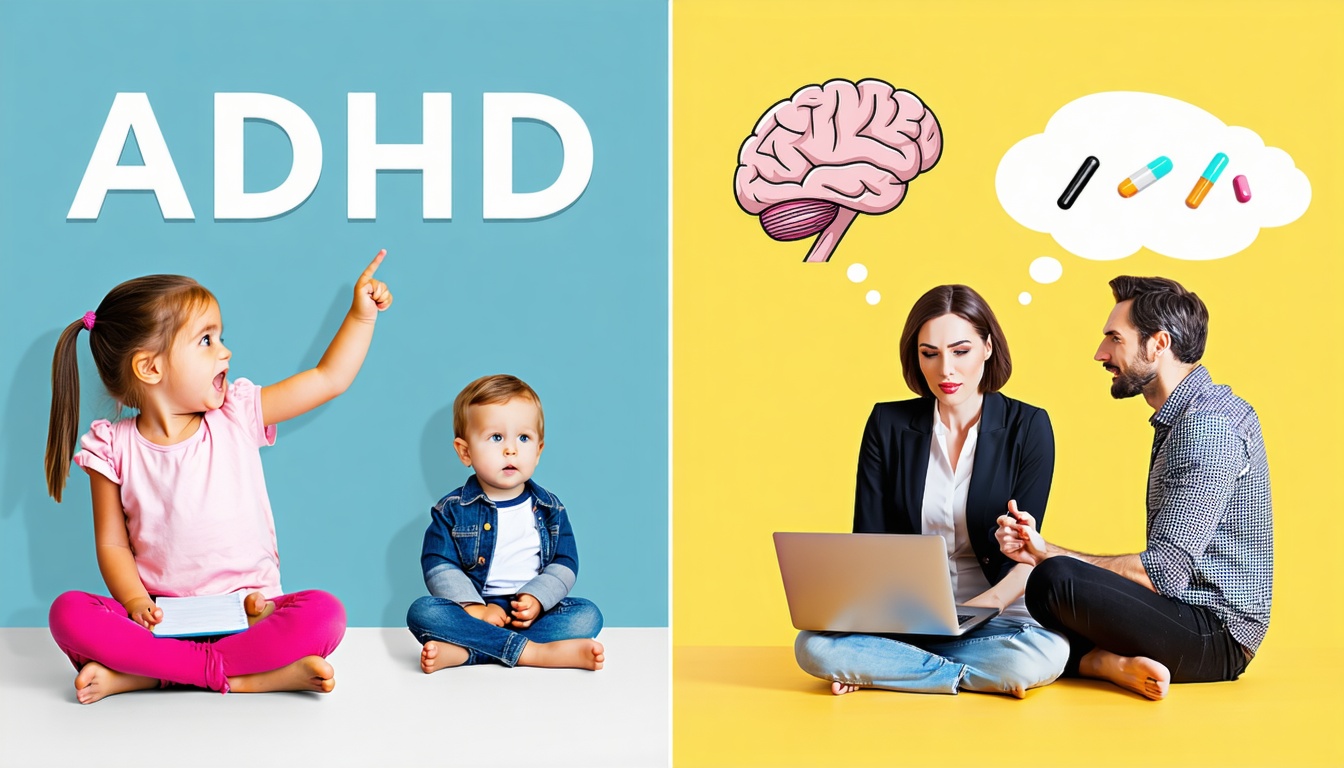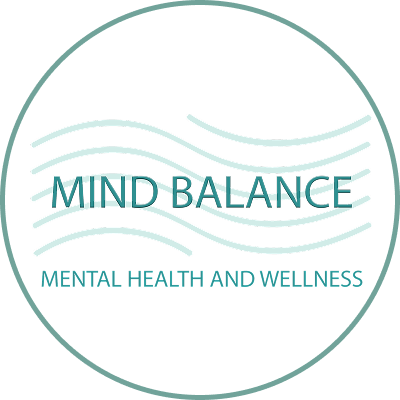Understanding ADHD in Children
Understanding ADHD in children involves recognizing the signs and symptoms that manifest early in their development. It is crucial for parents and caregivers to be attentive to these indicators, as they can significantly impact a child’s daily life and overall growth.
Signs and Symptoms in Children
Symptoms of ADHD typically begin before age 12, with some children showing signs as early as 3 years old. These behaviors can differ in intensity and must be observed across multiple settings, such as home and school. It is important to note that ADHD is more prevalent in boys than in girls, with boys often exhibiting more hyperactive behaviors while girls may tend to be inattentive without drawing much attention to themselves (Mayo Clinic).
Common symptoms may include:
| Symptom | Description |
|---|---|
| Inattention | Difficulty sustaining attention, especially in tasks. |
| Hyperactivity | Excessive movement or inability to stay still during appropriate situations. |
| Impulsivity | Acting without thinking or having trouble waiting for one’s turn. |
Preschoolers often have short attention spans and may naturally display high energy levels. It is essential not to label a child with ADHD based solely on their differences from peers or siblings, as typical childhood behaviors can vary widely. If concerns mainly arise in a school setting but not at home, it may indicate an issue other than ADHD (Mayo Clinic).
Impact on Development
The presence of ADHD symptoms can significantly affect various aspects of a child’s development, including their academic performance, social skills, and emotional well-being. Children with ADHD may struggle with following rules, completing assignments, and forming relationships with peers. Their impulsivity can lead to challenges in structured environments such as classrooms.
Factors contributing to the development of ADHD include genetics, environmental influences, and central nervous system conditions during key developmental stages (Mayo Clinic). Although the exact causes are still under research, understanding these developmental impacts can guide parents and caregivers in seeking appropriate support and interventions.
For more information about symptoms and how ADHD manifests, visit our article on understanding the signs of high-functioning anxiety. We aim to provide comprehensive resources and support for those navigating ADHD and its challenges.
Gender Differences in ADHD
Understanding the differences in ADHD presentations between boys and girls is vital for effective diagnosis and treatment. We recognize that these differences can significantly affect how ADHD is perceived and managed in both children and adults.
Boys vs. Girls Presentation
Research shows that boys are diagnosed with ADHD three times more often than girls. This discrepancy is not due to lower susceptibility in girls but rather to the different ways symptoms manifest. Boys commonly display externalized symptoms such as hyperactivity and impulsivity, while girls often show more subtle signs like inattentiveness and low self-esteem (Healthline).
The presentation of symptoms in girls may lead to underdiagnosis. For instance:
| Symptom Type | Boys | Girls |
|---|---|---|
| Hyperactivity | High visibility | Often less noticeable |
| Impulsivity | Frequently disruptive | Tends to be less disruptive |
| Inattentiveness | Can be disruptive | May be perceived as laziness |
| General Behavior | More externalized | More internalized |
In essence, girls may appear “spacey” or forgetful, leading adults to misconstrue these behaviors as learning disabilities or lack of effort rather than recognizing them as symptoms of ADHD.
Challenges in Diagnosis
The diagnosis of ADHD faces challenges related to gender-based differences in symptom expression. Although boys with ADHD exhibit clear hyperactive behaviors, girls’ symptoms can often be underrated. Parents of diagnosed girls frequently perceive their hyperactive and impulsive symptoms to be less severe when compared to boys with similar diagnoses (NCBI). This perception can lead to significant oversight in the evaluation and treatment of ADHD in girls.
Additionally, among children who meet the full diagnostic criteria for ADHD, girls are generally seen as more prosocial and often have lower hyperactivity scores in assessments by parents compared to boys who score higher on similar traits (NCBI). This difference in perception highlights the importance of awareness in both clinical settings and among families.
To learn how ADHD can be accurately diagnosed and addressed, consult our resources that discuss understanding the signs of high-functioning anxiety and what oppositional defiant disorder looks like in teens. Recognizing these various factors can enhance our approach to mental health and wellness, ensuring that we provide the highest quality of care.
Long-Term Effects of Untreated ADHD
Untreated Attention Deficit Hyperactivity Disorder (ADHD) can lead to significant, long-term challenges for individuals in both childhood and adulthood. Understanding these long-term effects is essential in recognizing the importance of seeking appropriate treatment and support.
Risks in Childhood and Adolescence
In childhood and adolescence, ADHD can manifest in various behavioral concerns, leading to adverse outcomes if not addressed. Children with ADHD are at a higher risk of exhibiting difficult and antisocial behaviors. Research indicates that these behaviors can escalate to delinquency, with a prevalence of ADHD found in 4% to 72% of teenage offenders in prison (PMC).
The following table summarizes some of the risks associated with untreated ADHD in younger populations:
| Risk Factors | Description |
|---|---|
| Antisocial Behavior | Increased likelihood of engaging in activities against social norms. |
| Academic Failure | Higher rates of academic underachievement and school dropouts. |
| Criminal Activity | Elevated chances of involvement in crimes or delinquent behavior. |
| Interpersonal Challenges | Difficulties in relationships, leading to social isolation. |
These risks highlight the need for early intervention and effective management strategies for children diagnosed with ADHD.
Adverse Outcomes in Adulthood
As individuals with ADHD transition into adulthood, the implications of untreated symptoms can become more pronounced. Adults with ADHD face a variety of functional impairments that can affect many aspects of life. Key issues include increased risks of occupational challenges, lower academic and professional achievements, and financial difficulties due to lower household income.
The following table outlines some critical adverse outcomes associated with adult ADHD:
| Outcome | Impact |
|---|---|
| Driving Risks | Higher likelihood of accidents and traffic violations. |
| Social Impairments | Increased difficulties in maintaining relationships and friendships. |
| Legal Matters | A five-fold increased rate of imprisonment compared to the general population. |
| Health Issues | Greater risks for cardiovascular diseases, obesity, substance abuse, and lower life expectancy. |
| Mental Health | Higher prevalence of psychiatric disorders such as depression and anxiety, along with lower self-esteem. |
The accumulated evidence underscores how untreated ADHD can lead to serious repercussions throughout a person’s life, including a heightened risk of early mortality and significant mental health challenges.
Recognizing these long-term effects helps reinforce our commitment to advocating for effective mental health care solutions, such as those offered through Mind Balance Health and Wellness. Our focus on providing comprehensive support and treatment can guide individuals and families towards healthier outcomes.
ADHD Diagnosis and Evaluation
Diagnostic Criteria in Children
When we look to diagnose ADHD in children, our approach aligns with the established criteria outlined in the DSM-5. According to the DSM-5, ADHD is characterized by symptoms of inattention, hyperactivity, and impulsivity. The diagnosis requires that these symptoms are present for at least six months and are inconsistent with the developmental level of the child. The symptoms are classified into different presentations:
| Presentation Type | Description |
|---|---|
| Predominantly Inattentive | Lack of attention to detail, distractibility |
| Predominantly Hyperactive/Impulsive | Excessive movement, impulsive behavior |
| Combined Presentation | A mixture of both inattentive and hyperactive/impulsive symptoms |
| Partial Remission | Symptoms present but do not meet full criteria |
Evaluations typically involve a comprehensive assessment that includes gathering information from parents, teachers, and clinical observations. Specialists, such as pediatricians or child and adolescent psychiatrists, examine the child’s symptoms, family history, and developmental milestones (NHS).
Specific Assessment Approaches
Our evaluation strategy for ADHD often utilizes various assessment tools and techniques. These may include standardized rating scales and questionnaires designed to gauge the severity and frequency of symptoms in different settings, such as home and school.
Moreover, it’s critical to consider potential contributing factors like genetics, environmental influences, or central nervous system conditions during crucial developmental stages. While the exact causes of ADHD remain unclear, ongoing research continues to investigate these factors.
To provide qualified care and ensure the best outcomes for our patients, we emphasize a thorough understanding of the diagnostic processes. Many children diagnosed with ADHD may also qualify for special education services under the Individuals with Disabilities Education Act, or receive accommodations under a Section 504 plan (American Psychiatric Association).
Choosing Mind Balance Health and Wellness for your mental health care means accessing a structured and knowledgeable evaluation process for ADHD, ensuring that you or your loved one receives the highest quality treatment tailored to individual needs.
Treatment Options for ADHD
When it comes to managing ADHD, we recognize that treatment options can vary significantly between adults and children. Our approach focuses on providing the highest quality mental health and wellness care at Mind Balance Health and Wellness, catering to each individual’s unique needs.
Medication and Its Effectiveness
Medications are often a cornerstone of ADHD treatment. Stimulants are the most common type of medication prescribed and are well-researched for their effectiveness in managing symptoms. According to the National Institute of Mental Health, these medications can lead to significant improvements in focus, attention, and impulse control.
| Medication Type | Description | Effectiveness |
|---|---|---|
| Stimulants | Include amphetamines and methylphenidate. | Highly effective for most individuals. |
| Nonstimulants | Includes medications like certain antidepressants; not FDA-approved for ADHD. | Can be prescribed when stimulants are not suitable. |
We believe it is essential to work closely with healthcare providers to determine the best medication plan for each individual. While stimulants have shown a high success rate, some individuals may require alternative options to address their specific symptoms, particularly if they face challenges related to co-existing conditions.
Psychotherapy and Behavioral Interventions
In addition to medication, psychotherapy is a vital component of ADHD treatment. Therapy offers individuals coping strategies and insights to better navigate daily challenges. Through various psychosocial interventions, we have seen improvements in managing symptoms, enhancing self-confidence, and addressing impulsive behavior. Techniques can include cognitive-behavioral therapy (CBT) and mindfulness practices.
| Therapy Type | Goals | Benefits |
|---|---|---|
| Cognitive Behavioral Therapy (CBT) | Change negative thought patterns. | Improved coping strategies and emotional regulation. |
| Mindfulness Training | Increase awareness and focus. | Reduced anxiety and impulsivity. |
We emphasize tailored treatment plans that may combine medication with therapeutic interventions. By adopting a holistic approach, we aim to help individuals achieve their goals while effectively managing their symptoms of ADHD. For further information on related topics, you might find the following articles helpful: understanding the signs of high-functioning anxiety, managing bipolar disorder: medication and therapy approaches, and understanding the complex symptoms of OCD.
At Mind Balance Health and Wellness, we are committed to guiding our clients through the complexities of ADHD treatment, ensuring that they can lead fulfilling lives regardless of the challenges they face.
Managing ADHD Across the Lifespan
As we support those with ADHD through the various stages of life, it becomes essential to understand how the transition from childhood to adulthood can impact individuals. The approach we take at Mind Balance Health and Wellness is tailored to address the unique needs of those with ADHD.
Transitioning from Childhood to Adulthood
The journey of individuals with ADHD often extends beyond childhood. For at least one-third of children diagnosed with ADHD, symptoms persist into adulthood (CDC). As children transition into adults, symptoms may shift, presenting in new forms. For instance, while hyperactivity in youth is characterized by physical restlessness, adults may exhibit extreme restlessness or hyperactivity that can wear others out (CDC).
Adults with ADHD frequently face challenges affecting various aspects of life, including education, employment, and relationships. Many may not have received a diagnosis in childhood due to a lack of recognition by those around them or because their symptoms were manageable until adulthood’s demands escalated. This underdiagnosis can lead to accumulated difficulties as they navigate work environments or personal relationships.
To illustrate the impact of untreated ADHD into adulthood, consider the following table that outlines common functional impairments experienced by adults with ADHD:
| Impairment | Statistical Odds |
|---|---|
| Driving Risks | Increased |
| Lower Academic Achievements | Significant |
| Lower Household Income | Observable |
| Social Impairments | Elevated |
| Rates of Divorce | Higher |
| Gambling Issues | Increased Rates |
| Imprisonment | Five-fold increase compared to the general population |
Many adults with ADHD face compounded health risks, such as substance use, obesity, and other psychiatric disorders like depression and anxiety. The ramifications of these health outcomes not only affect individual well-being but can also lead to serious consequences, increasing the risk of suicidal ideation and attempts (PMC).
Holistic Care Approach
To address the complexities of ADHD, we advocate for a holistic care approach tailored to the individual. This might include a combination of medication, psychotherapy, and education or training. Our method emphasizes understanding each patient’s unique challenges, enabling us to provide comprehensive support across their lifespan.
At Mind Balance Health and Wellness, we strive to create personalized treatment plans that consider not just the symptoms of ADHD but also the lived experiences of the individual. We work to empower our clients with the tools and resources necessary to manage their condition effectively, enhancing their quality of life.
By recognizing what makes ADHD different for adults compared to children, we can offer targeted advice and support. This enables our clients to navigate the challenges of adulthood with greater confidence and control. For more insights into the management of related mental health issues, feel free to read about understanding the signs of high-functioning anxiety or learn about treatment paths for complex PTSD.





